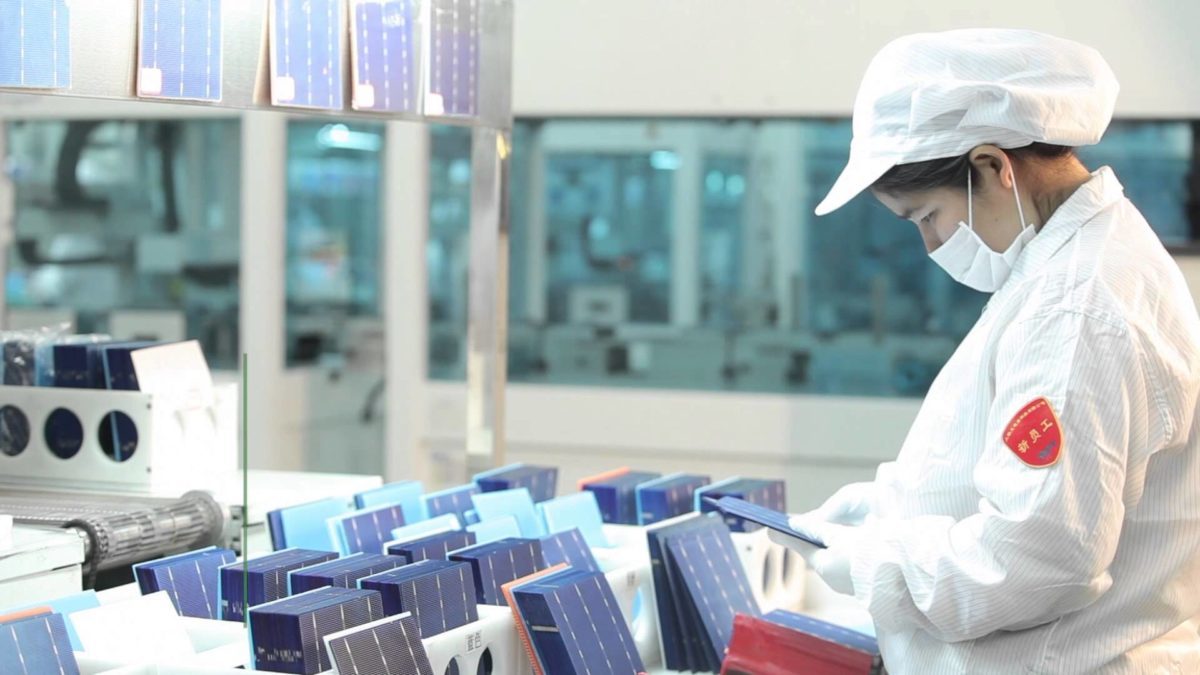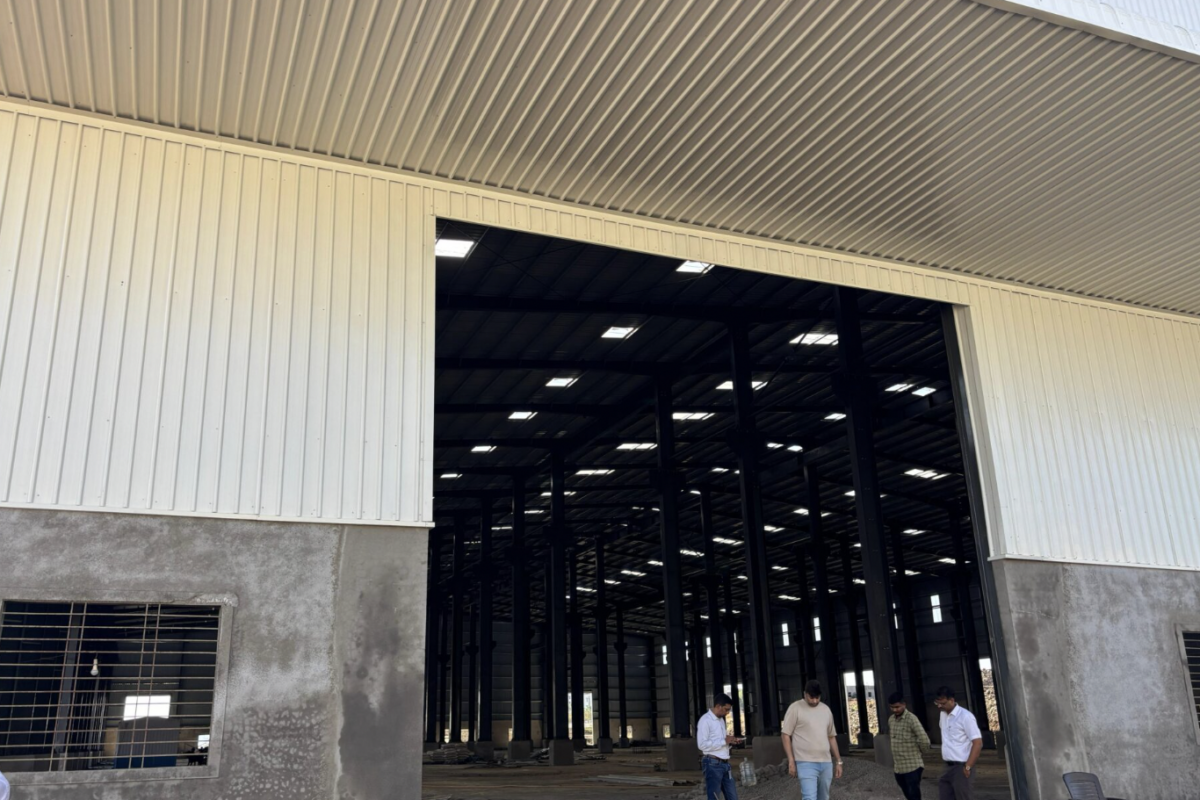The vertically integrated Chinese solar firm, JinkoSolar, has posted total solar module shipments of 2,015 MW, including 209 MW to be used in its overseas downstream solar projects, a decrease of 18.8% from 2,481 MW in the fourth quarter of 2017 and a decrease of 2.6% from 2,068 MW in the first quarter of 2017. However, this was already forecast in the company’s 2017 financials, according to which it expected shipments between 1.8 GW and 2 GW of modules in the first quarter of this year.
Total revenues were CNY 4.57 billion ($728.1 million), a decrease of 28.1% from the fourth quarter of 2017 and a decrease of 20.9% from the first quarter of 2017, the company announced.
“We shipped 2,015 MW of solar modules during the quarter, and generated total revenues of $728.1 million. Our gross margin increased to 14.4%, compared with 11.6% last quarter as we benefit from the drop in polysilicon prices and the further optimization of our manufacturing costs as a result of continued technological improvement and reduced OEM usage,” said Kangping Chen, JinkoSolar's Chief Executive Officer.
Against the backdrop of the latest policy updates – a joint “2018 Solar PV Power Generation Notice” issued by three Chinese government ministries on May 31 – which has dragged down 2018 installation forecasts for China to just under 34 GW, from 2017’s record of 53 GW, JinkoSolar reports an effect on market sentiment and its average selling prices (ASPs).
“We expect to see a decline in prices across our industrial supply chain, which will allow us to further cut both silicon and non-silicon costs during the second half of the year to offset the decline in the ASPs. Despite the strong initial reaction to the new policies, we remain optimistic about the demand of the Chinese market for the full year 2018, which is expected to hit 35GW+,” said Kangping.
The company reports to have over 80% of its order book for 2018 already filled, mostly made up of overseas orders with fixed prices throughout the year, noting that its production capacity is fully utilized at the moment and expected to remain so during the second half of the year.
“We believe the Chinese government's new policies to have relatively limited impact on our operations over the short term, and we remain confident in our future business prospects and the long-term growth of the industry overall,” Kangping said, adding that aside from the Top Runner Program, poverty alleviation and DG projects, the company expects to see a large number of grid parity projects under new business models appear in the second of half of 2019.
Global presence & optimism
Further Q1 results show that JinkoSolar had gross profit of CNY 656.1 million ($104.6 million), compared with RMB 735.3 million in the fourth quarter of 2017 and CNY 649.0 million in the first quarter of 2017, with the decrease mainly attributable to a drop in the shipment of solar modules in the first quarter of 2018.
Gross margin was 14.4% in the first quarter of 2018, compared with 11.6% in the fourth quarter of 2017 and 11.2% in the first quarter of 2017, the increase mainly attributable to a decrease in silicon cost in the first quarter of 2018, which was partially offset by a decline in the average selling price of solar modules in the first quarter of 2018.
Income from operations in the first quarter of 2018 was CNY 125.0 million ($19.9 million), compared with CNY 91.3 million in the fourth quarter of 2017 and CNY 56.8 million in the first quarter of 2017. Operating margin in the first quarter of 2018 was 2.7%, compared with 1.4% in the fourth quarter of 2017 and 1.0% in the first quarter of 2017.
Total operating expenses in the first quarter of 2018 were CNY 531.1 million ($84.7 million), a decrease of 17.5% from CNY 644.0 million in the fourth quarter of 2017 and a decrease of 10.3% from CNY 592.2 million in the first quarter of 2017.
As of March 31, 2018, the company's in-house annual silicon wafer, solar cell and solar module production capacity was 9 GW, 5 GW and 9 GW, respectively.
For the second quarter of 2018, JinkoSolar estimates total solar module shipments to be in the range of 2.4 GW to 2.5 GW, and for the full year 2018 between 11.5 GW to 12 GW – as originally released in its module shipment guidance for 2018 prior to the May policy updates.
“While the policy changes in China have created a challenging domestic market environment, our extensive global sales network and geographically dispersed manufacturing facilities allow us remain flexible and be prepared to rapidly adapt to any future policy changes. We are fully prepared for the market consolidation and the new era of grid parity,“ said Kangping.
This content is protected by copyright and may not be reused. If you want to cooperate with us and would like to reuse some of our content, please contact: editors@pv-magazine.com.




The biggest solar panel company in the world may have a better understanding of the new Chinese policy than bed-wetting analysts. Even your esteemed reporter writes of “the Chinese government’s cuts to installations.” Where in the announcement (look up the Chinese text and use Google Translate) are these alleged cuts mentioned? It says specifically that the volume of utility solar is not regulated. The one cut is to the volume of distributed solar (up to 6 MW, basically commercial) enjoying an FIT. The big shift in utility is from a national FIT, dropped completely, to no-subsidy provincial auctions. A typical Chinese province is the size of a major European state, so don’t tell me that they lack the administrative capacity to hold auctions, as Indian federal states have done for some years.